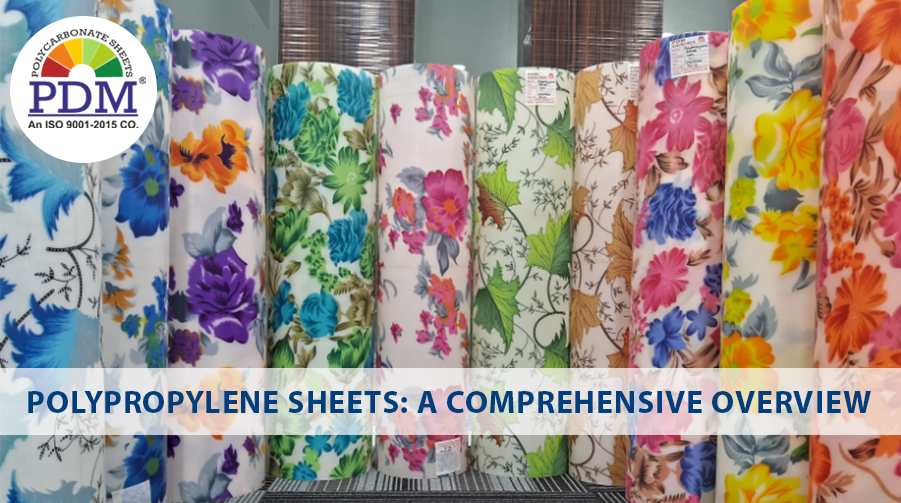Polypropylene sheets, a type of thermoplastic polymer, have become increasingly popular in various industries for their versatility, durability, and cost-effectiveness. From packaging to construction, these sheets offer a wide range of applications and benefits. We’ll delve into the world of polypropylene sheets, exploring their properties, applications, advantages, and tips for using them effectively.
What Are Polypropylene Sheet?
Manufacturers make polypropylene sheets from polypropylene resin, a synthetic polymer known for its excellent chemical resistance, toughness, and thermal stability. Manufacturers produce these sheets through a process called extrusion, where they force molten polypropylene through a die to create flat sheets of varying thicknesses. PP sheet come in different grades, including homopolymer and copolymer, each offering specific properties suited for different applications.
Properties of Polypropylene Sheets
- Chemical Resistance: PP sheets are highly resistant to a wide range of chemicals, acids and solvents, making them ideal for use in corrosive environments.
- Impact Resistance: With high impact strength, PP sheets can withstand heavy loads and rough handling without cracking or breaking.
- Thermal Stability: Polypropylene has a high melting point, allowing PP sheet to maintain their structural integrity even at elevated temperatures.
- Lightweight: Polypropylene sheets are lightweight yet durable, making them easy to handle and install in various applications.
- Moisture Resistance: These sheets are inherently moisture-resistant. Making them suitable for outdoor use and applications where exposure to water is a concern.
Applications of Polypropylene Sheets
- Packaging: Polypropylene sheets are widely used in packaging applications, including clamshells, trays, and blister packs. Due to their durability and clarity.
- Signage and Displays: In the advertising and retail industries. PP sheets are used for signage, displays, and promotional materials, offering excellent printability and visual appeal.
- Construction: Polypropylene sheets find applications in construction for temporary protection, concrete formwork, and wall cladding, thanks to their strength and weather resistance.
- Automotive: In the automotive industry, manufacturers use PP sheets for interior trim components, door panels, and trunk liners due to their lightweight and impact resistance.
- Medical: Polypropylene sheets are used in medical packaging, laboratory equipment, and disposable medical devices due to their chemical inertness and sterilizability.
Advantages of Polypropylene Sheets
- Cost-Effective: Polypropylene sheets offer a cost-effective solution compared to other materials like metal or glass, making them a preferred choice for budget-conscious projects.
- Recyclability: Polypropylene is recyclable, allowing for environmentally friendly disposal and reducing waste in landfills.
- Versatility: You can easily fabricate, weld and thermoform PP sheets into various shapes and sizes to meet specific design requirements.
- Hygienic: These sheets are non-toxic and resistant to bacteria growth, making them suitable for applications where hygiene is critical, such as food packaging and medical equipment.
- UV Resistance: You can formulate PP sheets with UV stabilizers to enhance their resistance to ultraviolet radiation, prolonging their lifespan in outdoor applications.
Tips for Working with Polypropylene Sheets
- Cutting: Use a sharp utility knife or scissors to cut PP sheets. Score the sheet multiple times before snapping to achieve clean cuts.
- Joining: You can join PP sheets using heat welding, solvent welding, or mechanical fasteners, depending on the application requirements.
- Printing: For printing on PP sheets, use compatible inks and printing techniques suitable for plastic substrates to ensure adhesion and durability.
- Bending: PP sheets can be bent using heat bending techniques. Heat the sheet evenly with a heat gun or in a preheated oven before bending to avoid cracking.
- Cleaning: Clean PP sheets with a mild detergent and water solution using a soft cloth or sponge. Avoid using abrasive cleaners or solvents that may damage the surface.
Conclusion
Polypropylene sheets offer a versatile and cost-effective solution for a wide range of applications across various industries. With their exceptional properties, including chemical resistance, impact strength, and thermal stability. PP sheets provide durable and reliable solutions for packaging, construction, automotive, medical, and more. By understanding the properties, applications, and best practices for working with PP sheets. You can unlock their full potential in your projects and achieve outstanding results.


